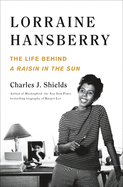
After Lorraine Hansberry's death from cancer in 1965 at age 34, her ex-husband, Robert Nemiroff, collected her writings in To Be Young, Gifted and Black. Charles J. Shields's admiring but probing Lorraine Hansberry: The Life Behind "A Raisin in the Sun" suggests that two other descriptors are critical to appreciating the playwright: Hansberry was privileged and gay.
In Shields's telling, both attributes shaped his subject's worldview. Hansberry, who was raised by upper-middle-class Republican parents on Chicago's South Side, found herself ostracized at her racially mixed school--not for being Black but for being well-to-do. After awakening to the power of the dramatic arts at the University of Wisconsin-Madison and to the ideals of the political left, Hansberry made her way to New York City, where she met and married Nemiroff, a white fellow traveler. For Hansberry, her eventual coming to terms with her sexuality crystallized the idea that racism, sexism and homophobia are three strands of one pernicious mindset.
Lorraine Hansberry exhibits Shields's pertinacious research as he proceeds toward the book's inevitable climax: with 1959's A Raisin in the Sun, which Hansberry wrote when she was 29, she made history as the first Black female playwright to have a show on Broadway. Along the way, Shields (And So It Goes: Kurt Vonnegut: A Life) keeps touching on Hansberry's artistic challenge: she was determined to inject her politics into her plays while creating realistic work that, as she wrote to her mother about Raisin, "tells the truth about people, Negroes and life." --Nell Beram, author and freelance writer

